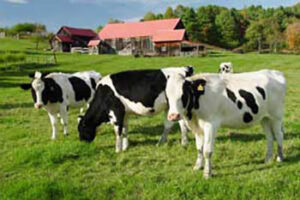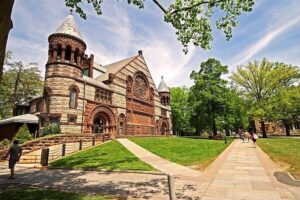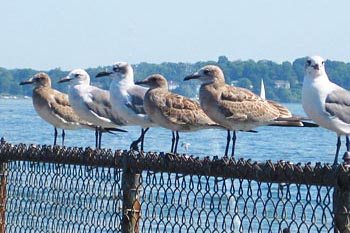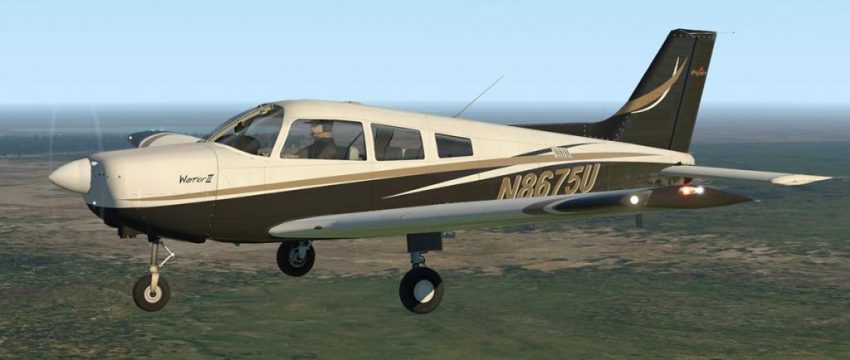
Learning to Fly: A Bird’s-Eye View of the Pioneer Valley
By Kylie Jelley
Ready For Takeoff!
The sky was a shade lighter than sapphire with hardly a cloud in sight. It was the perfect day for flying. The heat created just a touch of turbulence that left me with a hint of nausea. But other than that, a great flight lesson.
Before take-off, Ben Foster, my flight instructor, and I performed a routine check-up on the plane for safety. As we walked around, Foster, a college student with boyish features, skimmed his hand along the wing.
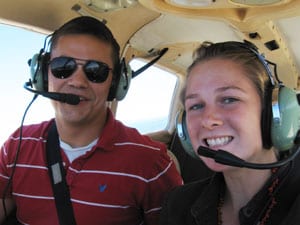
“What we look for are any dents or scratches that would indicate that the plane has been damaged. If there is evidence on the outside, it’s linked to the inside,” he said.
I trailed just steps behind him, peeking under the wings, and offering a second pair of surveying eyes.
The check-up took about twenty minutes. Once we made a full circle around the plane, Foster gave me the go-ahead to get in. I climbed up on the wing.
Gauges, Switches, and Buttons
My nerves were stimulated as soon as I stepped into the cockpit and sat down in the pilot’s seat. The instructor sat beside me with his own set of controls.
I was overwhelmed by the different gauges, switches, and buttons. Foster went through the checklist thoroughly. He touched on what every button and switch and gauge did, but my excitement left me mystified.

Ben conducts a safety check.
“Ready for take-off?” he asked.
I looked at him with wide eyes and nodded.
He gave me slow and simple instructions through the headset and radioed to make sure everything was clear.
After taxiing, I pulled the yoke back towards me, and slowly increased the pressure. We were in the air!
A Spectacular View
We flew at an altitude of 3,000 feet along the Connecticut River, and above the lush green hills and farmland of the Pioneer Valley of Massachusetts.
The lakes and rivers glittered as the sunbeams fell upon the surface. Mountains bordered the horizons in every direction. The soft hue of purple peaks blurred in the distance. The view was spectacular.

Snapping Shots
The buildings looked so small, and cars were the size of ants. I snapped some aerial photos.
The flight instruction lasted about an hour. I learned how to steer the plane, gently guiding the yoke to one side then to the other. It was a surreal feeling when Foster let go of all the controls and I was flying the plane myself.
Before I knew it we were back on the ground. We ended with a smooth landing.
Flying in the Piper Warrior II N4302V, a small plane was very different from being in the air on a commercial airline. You don’t have to peek out of a small frosted window, you can see everything.
After the landing, Foster recorded my time in the air. I completed one-fortieth of the flight time necessary for a pilot’s license.
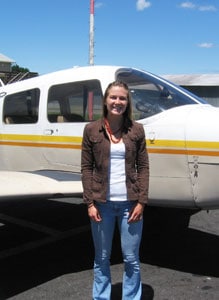
I jumped out of the white and yellow Piper. There were planes taxiing the runway, girls with sundresses and aviators approaching the hangar, and grease-stained mechanics working on the aircraft.
I looked up into the endless blue highway and saw a glint of a distant airplane.
Try it Out!
Like most lessons, under the direction of an FAA-licensed instructor, I learned to taxi, take off, fly the plane for a while, and assist with the landing.
I used LetsGoFlying.org to find a local airport and set up the instruction. My flight was scheduled at Northampton Aeronautics, a flight school offered at the Northampton Airport.
LetsGoFlying’s flight directory searchable database matches users with all the nearest airports within a 25-100 mile radius to their hometown.
LetsGoFlying.org is sponsored by the nonprofit Aircraft Owners and Pilots Association (AOPA). The organization works with flight schools across the country to offer introductory flights starting around $99.
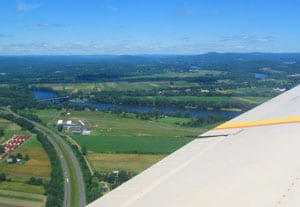
The website lists more than 3,500 flight schools nationwide and provides information for beginner pilots. Most flight schools offer introductory flights for up to 50 percent off the typical lesson price.
These days there is a serious need for more pilots, every airline is scrambling to keep staffed with retirements and not as many students learning to fly.
Those who are interested in attaining their private pilot’s license can expect to spend up to $10,000. Certified pilots can rent a plane for as little as $65 an hour (engine time) including fuel.
A Speedy Way to Take a Trip
With a plane, travelers can skip all the congested traffic headed to Cape Cod or other summer vacation areas. They can take a weekend trip to Niagara Falls and not have to worry about paying tolls.
Travelers who choose to rent a plane skip all the airport commotion, confusion with bags, and security checks. It’s a speedy way to take a trip.
This is a great innovative way to travel across the nation. And summer is a great time to begin training for a pilot’s license.
Flying allows you to connect easily with family and friends, explore new destinations, thrills, and adventures, challenge your skills, make smart business decisions and have more career options.
There are 5,400 public-use airports in the US. Many of these airports are located near fun recreational facilities and cultural activities such as skiing, hiking, golfing, parks art galleries, and museums. Flying yourself, your friends, or family to any of these great destinations is easy.
Learning to Fly
Learning to fly is not all that difficult. If you can drive a car and read a map, you can learn to fly. And a Private Pilot certificate (license) is good for life; the pilot just has to pass an FAA-mandated biannual medical exam.

There are some general requirements for a Private Pilot’s certificate. Students must obtain a Student Pilot Certificate from an FAA-designated doctor, and be at least 16 years of age to solo, and 17 to get their license.
They also have to pass an FAA written and practical test administered at an FAA computer testing center. Under the FAA regulations, students need a total of 40 hours of flight time.
Prospective pilots can start out by taking flight lessons at a local flight school and work their way up to being captain of a major airline.
There are many options, and even career opportunities, beyond attaining a Private Pilot certificate. The next few steps are Instrument Rating, Multi-Engine Rating, Commercial Pilot Certificate, Instructor Rating, and ultimately Airline Transport Pilot (ATP) Certificate.
Helpful Links
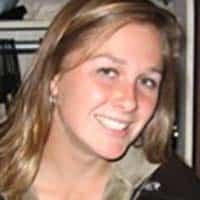 Kylie Jelley lives in Greenfield Mass.
Kylie Jelley lives in Greenfield Mass.
- Missouri Sports Travel Adventure: From Landmarks to Ballparks - January 21, 2026
- What First-Time Visitors Get Wrong About Visiting Iceland - January 15, 2026
- Bareboat Charter vs all-inclusive Crewed: Which Luxury Charter Fits You? - December 29, 2025


